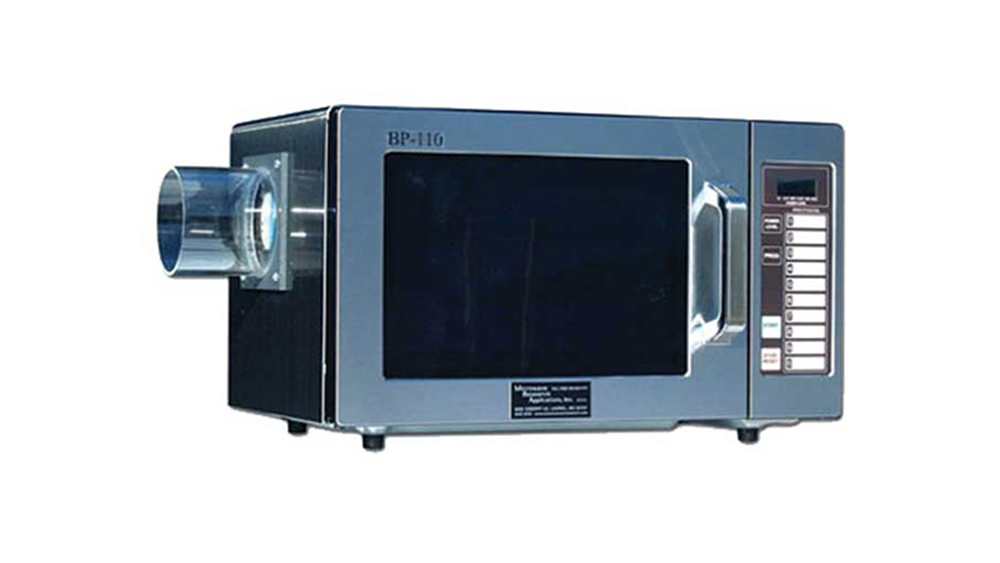Long before the discovery and advent of Immunohistochemistry in Histology, pathologists utilized and relied on the diagnostic tools of Special Stains. Within this tool founded on the concept of specific stain/dye affinity for certain tissues, Histologists realized the efficacy of heat in speeding up the stain reaction and/or enriching the depth of color. Temperature ovens were initially used to preheat stain solutions and allow slides to incubate for shorter times. The heat acted as a catalyst to the reaction of longer stains such as Periodic Acid-Schiff’s Reagent (PAS), Acid Fast Bacilli (AFB), silver stains, and others.
In the 1970’s, household microwaves found a place in the Histology laboratory simply as a means of quick heating solutions. Staining times could be significantly reduced to sometimes as much as 90% from room temperature procedures. The unfortunate of non-standardization of household microwaves in their design and performance presented a problem of inconsistency in results from one commercial brand to another. Again, they were only designed to heat up quickly without the focus on controlled, gradual heating. Laboratorians and especially regulatory agencies realized that if microwave technology were to be used in patient care testing, microwave units would have to have performance and safety features designed into their units that would help standardize the expected results. Scientists and researchers began working with manufacturers to design microwave units specifically designed for laboratory use. Some of the early work of physicist L.P. Kok and pathologist Mathilda Boon explored controlled use of the technology as a diagnostic tool in pathology, and in 1987 published, “The Microwave Cookbook of Pathology”. However, in 1994, Login & Dvorak published, “The Microwave Tool Book: A Practical Guide for Microscopists”; the first fully comprehensive guide to not only the technology, but the unit and operating features as well.
When discussing basic microwave technique, it is important to first understand the operating unit and how it functions. This gives the user information on the benefits and limitations of the unit so that staining protocols can be developed accordingly. The central core operating feature of any microwave is the magnetron. In the image to the right it is seen as the blue device labeled ‘C’. This is the unit part that emits electromagnetic energy in measured pulses. With household microwaves there is no standardization in the pulse cycle. A single pulse may be 10, 20, or even more seconds in length. In laboratory designed units, which are the only regulatory type validated and approved for laboratory use, pulse cycles are much shorter such as 1-2 seconds. With these shorter pulse cycles, the user has more control over the ramping up or maintenance of heating temperatures.

The magnetron can be thought of in the same fashion as a motor that needs to warm up to operate optimally. When you first use it for the day the user should not expect it to operate cold in the same way it would during repeated use. Since most irradiation times in microwave staining in Histology are relatively short (such as 5 to 10 seconds), you want to make sure the microwave is pulsing full energy for each second. A good technique is to place 50-100 ml. water into a plastic microwavable coplin jar and heat it for 10-15 seconds at 100% power before initial use for the day. This gives the magnetron an opportunity to generate energy at the start.
Microwaves will progressively dissipate in liquid solutions. When you microwave a solution in a coplin jar, the temperature at the top of the solution will be slightly higher in temperature than the middle or lower portion of the jar. This can cause inconsistency in stain uptake on tissue slides and a lesser stain intensity on the lower part of the slide. For this reason, it is always good to use a plastic pipette to gently mix the solution 2-3 times immediately after the heating pulse, then let the slides incubate.
In microwave technology it is important to use items compatible with microwave exposure. We have mentioned coplin jars several times as the staining jar most commonly used. Coplin jars made of glass have a high tendency to crack due to the rapid acceleration of heat. Microwavable coplin jars are made of high-density polyethylene material and should be used in general staining. The images on the right show a design to accommodate 5 slides for optimal staining and have a lid which should be left off during the heating process. The plastic pipette previously mentioned can be inserted in between the slides to mix the solution after heating.

Another basic technique is to use a dampened paper towel as a placemat under the coplin jar when heating to absorb excess microwave energy and provide controlled generation of heat in the chamber.
These are just a few basic tips to allow your manual staining experience using microwave technology to be successful. Commercial vendors selling special stain kits have worked out simple stain protocols in microwave format. Using this as a template along with good technique can grossly improve your turnaround time and in many cases, enrich the quality of your results. It all begins with using a laboratory designed microwave approved by your existing laboratory regulatory agency.
References:
- Boon, M., Kok, L.P., “The Microwave Cookbook of Pathology”, Coalomb Press, Leyden, Netherlands, 1987.
- Brown, S., “The Fundamentals in Microwave Decalcification”, Workshop-Lab Management Consultants-Technical Series, 2007.
- Login,G., Dvorak, A.M., “The Microwave Tool Book-A Practical Guide for Microscopists”, Boston: Beth Israel Hospital, 1994.
- www.fishersci.com

